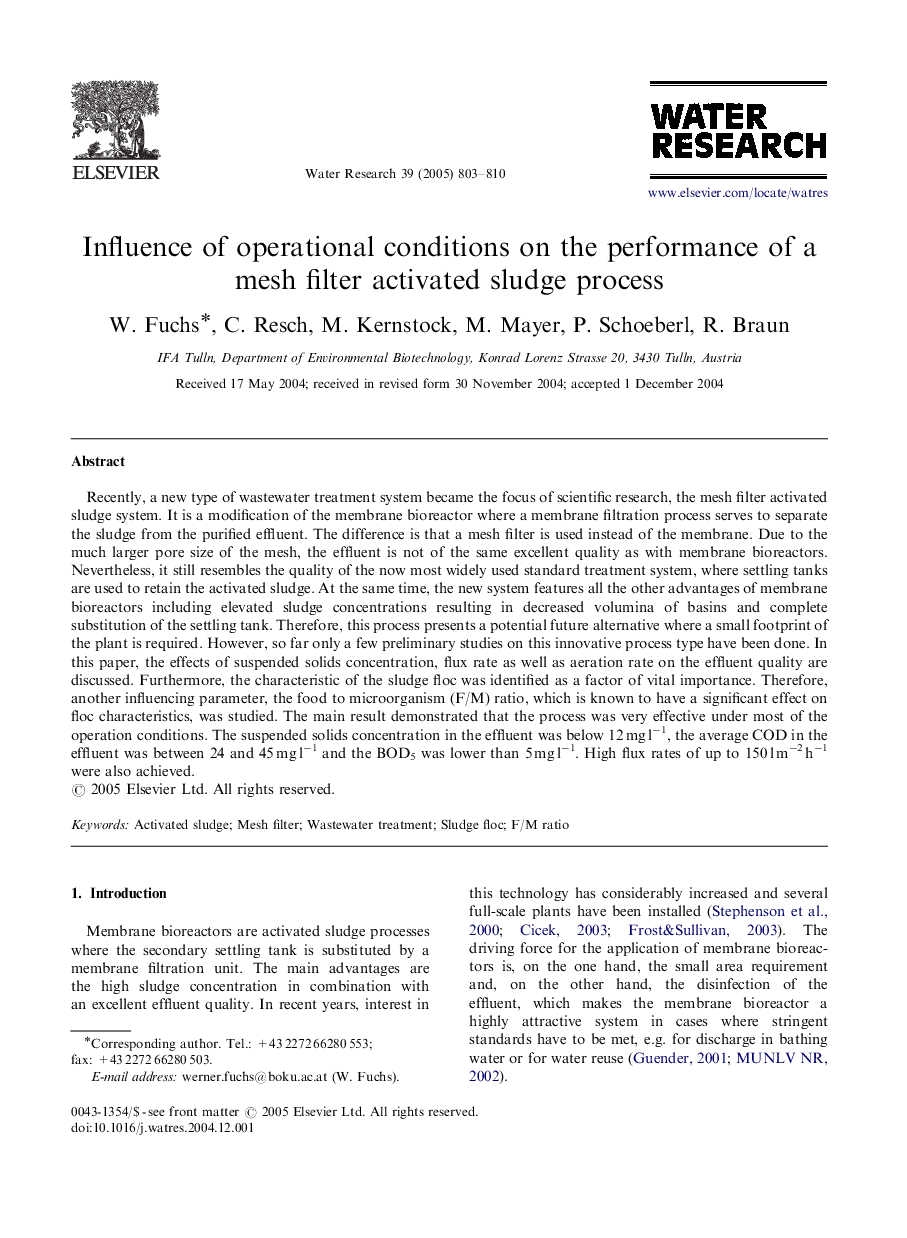| Article ID | Journal | Published Year | Pages | File Type |
|---|---|---|---|---|
| 9468286 | Water Research | 2005 | 8 Pages |
Abstract
Recently, a new type of wastewater treatment system became the focus of scientific research, the mesh filter activated sludge system. It is a modification of the membrane bioreactor where a membrane filtration process serves to separate the sludge from the purified effluent. The difference is that a mesh filter is used instead of the membrane. Due to the much larger pore size of the mesh, the effluent is not of the same excellent quality as with membrane bioreactors. Nevertheless, it still resembles the quality of the now most widely used standard treatment system, where settling tanks are used to retain the activated sludge. At the same time, the new system features all the other advantages of membrane bioreactors including elevated sludge concentrations resulting in decreased volumina of basins and complete substitution of the settling tank. Therefore, this process presents a potential future alternative where a small footprint of the plant is required. However, so far only a few preliminary studies on this innovative process type have been done. In this paper, the effects of suspended solids concentration, flux rate as well as aeration rate on the effluent quality are discussed. Furthermore, the characteristic of the sludge floc was identified as a factor of vital importance. Therefore, another influencing parameter, the food to microorganism (F/M) ratio, which is known to have a significant effect on floc characteristics, was studied. The main result demonstrated that the process was very effective under most of the operation conditions. The suspended solids concentration in the effluent was below 12 mg lâ1, the average COD in the effluent was between 24 and 45 mg lâ1 and the BOD5 was lower than 5 mg lâ1. High flux rates of up to 150 l mâ2 hâ1 were also achieved.
Related Topics
Physical Sciences and Engineering
Earth and Planetary Sciences
Earth-Surface Processes
Authors
W. Fuchs, C. Resch, M. Kernstock, M. Mayer, P. Schoeberl, R. Braun,
